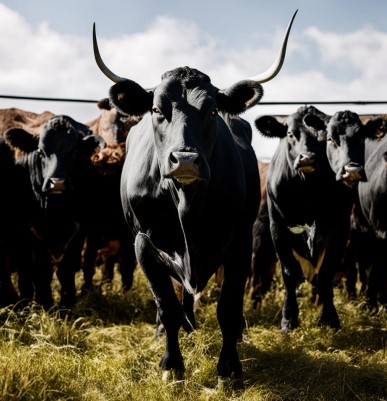China is once again setting the pace in the global meat market.

According to the study, Argentina exported 62,200 tons of products worth $346.9 million in July 2025. Compared to June, the volume declined by 1%, although sales increased by 5.5%. Year-on-year, the results are much more favorable: sales abroad increased by 9.7% in volume and 51.7% in value.
Prices contributed to the growth . The average price of exported MEAT was $5,577 per tonne, up 6.6% from June and 38% above the July 2024 level . This improvement is also reflected in the total EXPORT volume for the first seven months of the year: 376,245 tonnes were exported, valued at $1.943 billion. Despite a 14.5% decrease in volume compared to the same period last year, sales increased by 17.6%.
Rosgan emphasizes that prices for fresh and chilled cuts have increased by 23% compared to last year, while in the frozen boneless segment, which accounts for 76% of supplies, growth was almost 40%.
And here's where the first warning sign comes in. Although CHINA continues to consume over 70% of Argentine beef, sales there in July reached 44,842 tons, down 7% from June. Rosgan warns that this trend could worsen in August amid the tariff dispute between Brazil and the US.
Brazil , which saw significant growth in shipments to the Chinese market until July (18% from June to July and 15% in the first half of the year), has been subject to a 76.4% US import tariff since August. This barrier is forcing Brazil to redirect volumes, with China being its primary destination market.
Argentina's problem is that it has a larger, aggressively priced competitor pushing meat into the same market that accounts for three-quarters of our exports.
The report also highlights inventory trends in China. Consulting firm OIG+X calculates an index reflecting the dynamics of imported meat stocks in warehouses. This indicator, which is set to 100, has increased by 10 points since the beginning of the year and now stands at 85%.
Analysts believe this is due not only to the increased influx of meat from abroad in recent months, but also to the difficulties in developing the Chinese market. With a key quarter approaching (September-November is typically the peak demand period), the results for this period will be crucial for the year's results.
As of July, Argentine beef exports totaled 376,000 tonnes, approximately 54,500 tonnes less than the 2024 target. Rosgan estimates that shipments will need to increase by 25% in the remaining months to offset last year's exports of 769,000 tonnes.
They say the goal appears ambitious. Prices are favorable, but the combination of Brazilian competition, rising Chinese stocks, and dependence on the single market makes the situation risky.
Read together with it:
- Belstat reported how much grain, milk, meat, and vegetables are produced in Belarus per capita.November 14, MINSK . Belarus produces 913 kg of grain, 958 kg of MILK, 341 kg of potatoes, and 304 kg of vegetables per capita, according to a review by the National Statistical Committee for the Day of Agricultural and Processing Industry Workers, BELTA reports. The country also produces 78 kg of fruits and berries, 147 kg of livestock and poultry (slaughter weight), and 4......
- The IEA sees a risk of a decline in oil production in Russia due to sanctions.The IEA sees a risk of reduced oil production in RUSSIA due to US sanctions , but maintains its production forecast. According to the IEA, Russian oil exports will remain unchanged.There is a "significant downside risk" to Russia's oil production forecast due to US sanctions, the International Energy Agency (IEA) said in a report.BLOOMBERG . The agency's experts believe that the latest US sanction...
- UniCredit заявил о галактических усилиях из-за санкций против РоссииUniCredit старается не нарушить «более 15 тыс. санкций», а также не «совершать ошибки», которые позволят изъять его активы в России, заявил гендиректор. После начала военной операции банк начал рассматривать возможность ухода Итальянский банк UniCredit прилагает «галактические усилия», пытаясь соблюсти международные санкции в отношении своего российского подразделения. Об этом заявил генеральный д...
- "Коллективы АПК способны решать любые задачи даже в непростых условиях". Назаров о заслугах сельхозпроизводителейЮрий Назаров 13 ноября, Минск. Обеспечение продовольственной безопасности страны - большое достижение трудовых коллективов аграриев, отметил управляющий делами Президента Республики Беларусь Юрий Назаров на торжественной церемонии награждения государственными и иными наградами работников АПК Управления делами Президента Республики Беларусь, передает корреспондент БЕЛТА. Торжественная церемония наг...
- Sustainable growth of the food and processing industries in BashkortostanIlshat Fazrakhmanov, Deputy Prime Minister andThe regional Minister of Agriculture noted that the development of these industries provides the population with essential food products and contributes to increased exports. Since 2020, agricultural exports from the region have doubled. Since the beginning of 2......




























































